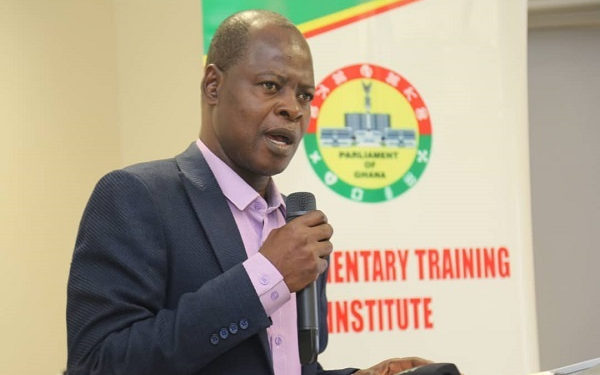Gov’t advised to harmonise revenue streams from mineral royalties
Dr. Steve Manteaw, Co-Chair of the Ghana Extractive Industries Transparency Initiative (GHEITI), has called for the coordination of revenue streams from mineral royalties that accrue to the various district for the economic development.
Government in 2018, instituted the Minerals Income Investment Fund Act,2018, aimed at establishing a Fund to manage the equity interests of the Republic in mining companies, to receive mineral royalties and other related income due the Republic from mining operations, to provide for the management and investment of the assets of the Fund and for related matters.
Prior to that, government realizing the increasing illegal small-scale mining practices have brought about a devastating effect on the environment which has impacted negatively on Ghanaians, particularly those living in Mining Communities, also instituted the Minerals Development Fund Act, 2016, (ACT 912) was passed on the 29th of March, 2016, specifically to ensure true improvement in the standard of living within Mining Communities across the country affected by mining operations.
Further by the MIIF law, 20% of royalties collected across all mineral types goes to the Minerals Development Fund (MDF), which is responsible for deploying it directly to traditional authorities and local government for the provision of developmental amenities; 2% goes into the operations of MIIF; 2.4% to GRA as a collecting agent; and 75.6% goes into investment activities.
However, it is the restricted revenue streams that Dr. Manteaw is advocating for a synchronization, he said “I would want to see a harmonization of the revenue streams that accrue to the districts for economic development, in developing the medium term framework for all of the assemblies we need to bring everybody on board to have shared plan and in terms of financing we harmonise all the resources to be able to finance that project -so we don’t have a situation where the local management committee of the mining community development fund sits in the corner and identify projects that are not aligned with the medium term development framework of the district.
Another fund I identified was the development foundations that has been set up by the mining companies, again you need to align expenditures of this foundations with the medium-term plan, and it is in doing that, that we can be able to ensure spending efficiency at the local level,” he quipped during a workshop on Mining Royalties and Local Community Development under the auspices of Natural Resource Governance Institute (NRGI) in Accra on Thursday.
According to Dr. Manteaw, the concept of benefit sharing in the mining sector is not new, noting that it became necessary sometime back in 1999 when the communities started agitating for increased share of mining benefits because all they saw in the communities was shipment of minerals and in return nothing really to improve their livelihoods, so in response the government then under the late Prez. Rawlings instituted through an administrative process an arrangement that returned about 10percent of minerals royalties to host communities, there is another 10percent that goes to support the sustainability of the industry.
He explained that in 2016 when a law was passed with the hope that it will deal with some of the challenges with the implementation of the previous arrangement rather, it created a parallel stream of revenue to the district which is 20percent of the minerals royalty and it is to pursue the same objective of the local economy development, “I thought that was unfortunate because you are increasing the bureaucratic cost of development at the local level.”
“One that is managed by the assembly and a portion that is managed by a newly created local management committee, so I thought that was not efficient, but even that aside that arrangement comes with duplication of the risks of project because if the two nomenclatures; the assembly and the LMC for the MCDS do not work together then you could have a situation where projects could be duplicated so I thought that was not efficient enough.”
For Dr. Manteaw, within a short space of time, from 2017 to date, the mining community development scheme has been able to achieve so much more and reckons, “it makes sense to even hand over the functions of the OASL to MDF, this is because over this short period they have managed to create guidelines for the utilization of mineral royalties and they set up a protocol that require communities on their own to identify projects they want to fund with the mineral revenues and to submit proposals to the MDF Secretariat, these proposals are evaluated and when approved, monies are disbursed for the implementation of the project.”
Patrick Stephenson, Economic Advisor at NRGI indicated that rationale for the event was to highlight the challenges confronting these mining communities and fashion out strategies to tackle it.
“For us the question really is how can we start a conversation that says that local mining communities are entitled to say a Ghc100m a year, is the money going to them and if not what are the ways we can ensure it can be moved to them, so ultimately it is the development of the local communities that is at the heart of the conversation and we can at least maximise value from the extractive sector particularly gold mining.”








